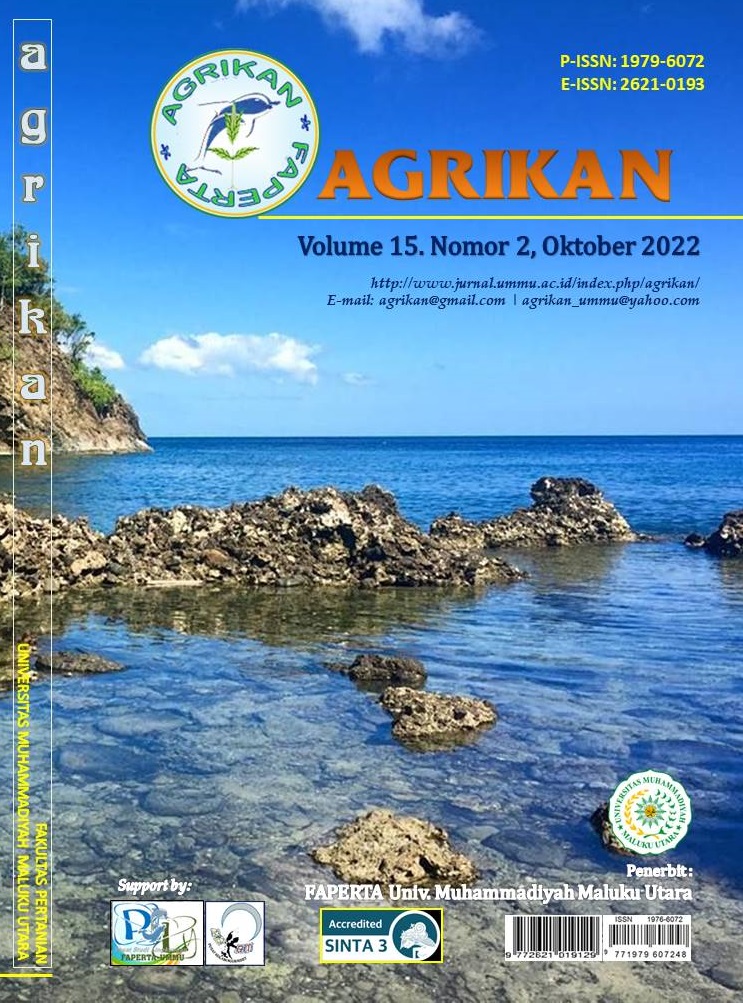Trichoderma and Bokashi Biological Agents Interaction Test as Growth Stimulators of Chilli (Capsicum annum)
DOI:
https://doi.org/10.52046/agrikan.v15i2.1280Keywords:
Trichoderma sp, Bokashi, CabaiAbstract
This research was motivated by excessive use of synthetic pesticides resulting in pest resistance and reduced soil nutrients. The aim was to improve soil health by testing the addition of the biological agent Trichoderma to each treatment of bokashi fertilizer and to find out the best interaction for each treatment. The research method used a Randomized Block Design (RAK) with 4 treatments namely control, bokashi fertilizer (cow, chicken and goat dung) with the addition of Trichoderma in each treatment of bokashi fertilizer repeated 3 times. Based on the results of the analysis of the interaction of Trichoderma in each bokashi treatment, it showed a significant effect on the growth of chili plants and obtained the best effect on the addition of Trichoderma with goat bokashi. Trichoderma also has an impact on the lack of whitefly attacks as a yellow virus vector that previously attacked plants in the same land. In conclusion, the interaction of Trichoderma on bokashi fertilizer had a significant effect on the growth of chili plants with the best interaction on bokashi of goat manure.
Downloads
Published
Issue
Section
License
Copyright (c) 2022 Betty Kadir Lahati, Helda Sabban, Hayun Abdullah

This work is licensed under a Creative Commons Attribution 4.0 International License.

This work is licensed under a Creative Commons Attribution 4.0 International License.













